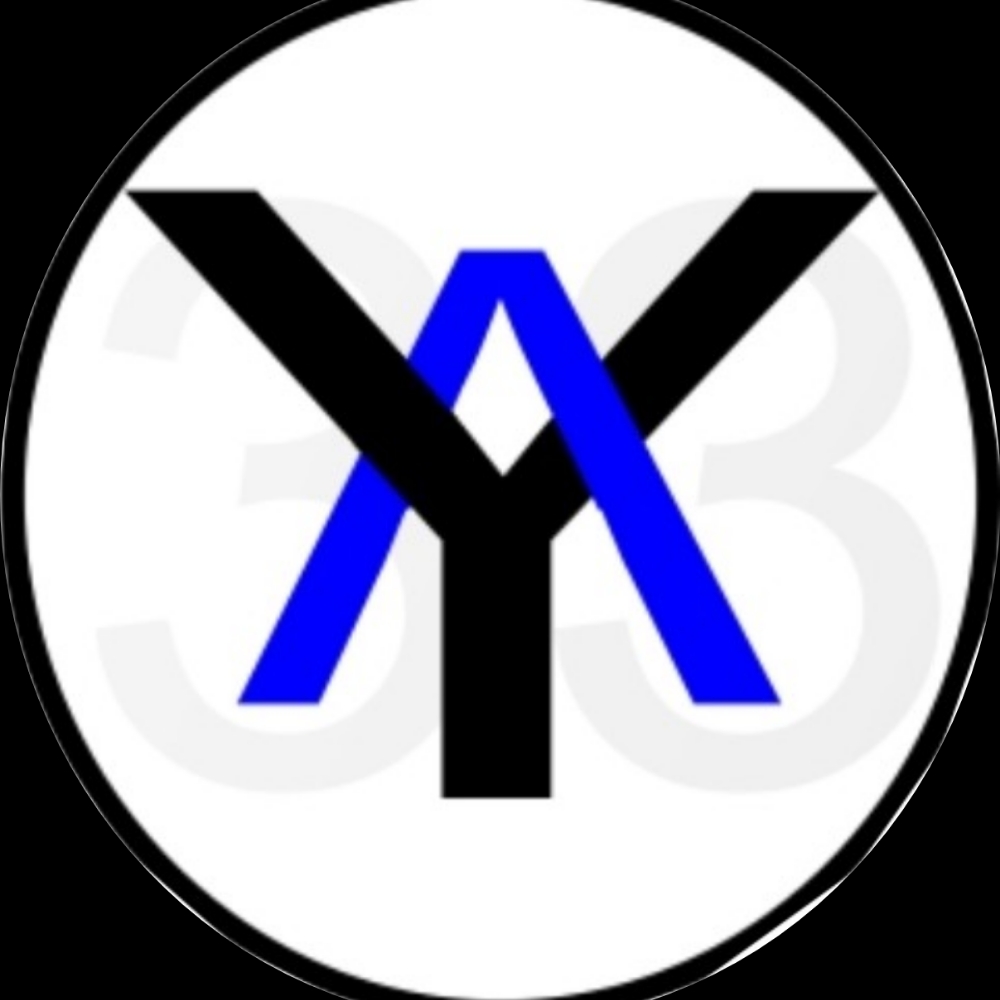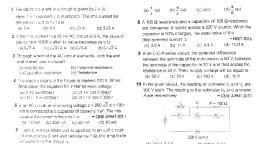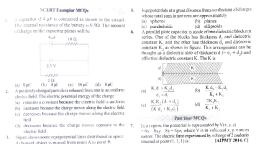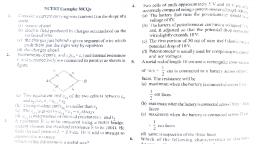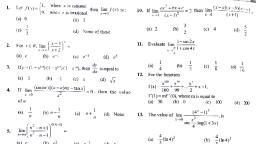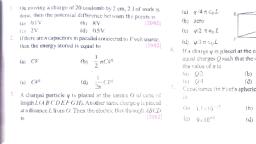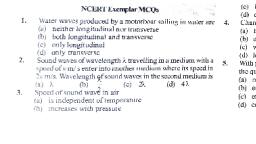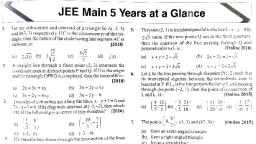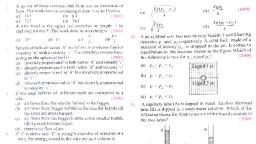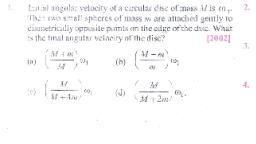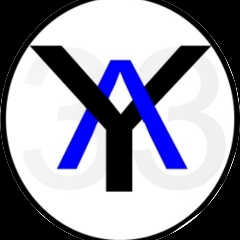Question 1 :
A solid cylinder is rolling down a rough inclined plane of inclination {tex} \theta . {/tex} Then
Question 2 :
A sphere is rolled on a rough horizontal surface. It gradually slows down and stops. The force of friction tends to<br>
Question 4 :
Consider a body of mass {tex} 1.0 \mathrm { kg } {/tex} at rest at the origin at time {tex} t = 0 . {/tex} A force {tex} \vec { F } = ( \alpha t \hat { i } + \beta \hat { j } ) {/tex} is applied on the body, where {tex} \alpha = 1.0 \mathrm { Ns } ^ { - 1 } {/tex} and {tex} \beta = 1.0 N . {/tex} The torque acting on the body about the origin at time {tex} t = 1.0 \mathrm { s } {/tex} is {tex} \vec { \tau } {/tex}. Which of the following statements is (are) true?
Question 5 :
A disc, whose plane is parallel to the horizontal, is moving such that velocity of point <em>A</em> on its periphery is ( − 2 <em>î</em> + <em>a</em><em>ĵ</em>)m/s and velocity of point <em>B</em> is (<em>b</em> <em>î</em> − 5<em>ĵ</em>)m/s, where <em>a</em> and <em>b</em> are constants. The radius of the disc is {tex}R = \frac{1}{2}m{/tex} and angular speed of <em>d</em>is<em>c</em> about vertical axis passing through its centre is ω = 4 rad/sec. Choose the correct alternative (s).<img style='object-fit:contain' style="max-width:240px;" src="https://storage.googleapis.com/teachmint/question_assets/JEE%20Advanced/5f16c3061da6d070c2abf9e1" />
Question 6 :
A uniform rod <em>AB</em> of length 7m is undergoing combined rotational and translational motion such that, at some instant of time, velocities of its end point <em>A</em> and centre <em>C</em> are both perpendicular to the rod and opposite in direction, having magnitude 11 m/s and 3 m/s respectively as shown in the figure. Velocity of centre <em>C</em> and angular velocity of the rod remains constant <br> <img style='object-fit:contain' style="max-width:240px;" src="https://storage.googleapis.com/teachmint/question_assets/JEE%20Advanced/5f16c3061da6d070c2abf9df" />
Question 7 :
The position vector {tex} \overrightarrow { \mathrm { r } } {/tex} of a particle of mass {tex} \mathrm { m } {/tex} is given by the following equation<br> {tex} \overrightarrow { \mathrm { r } } ( \mathrm { t } ) = \alpha \mathrm { t } ^ { 3 } \hat { \mathrm { i } } + \beta \mathrm { t } ^ { 2 } \hat { \mathrm { j } } {/tex}<br> where {tex} \alpha = 10 / 3 \mathrm { ms } ^ { - 3 } , \beta = 5 \mathrm { ms } ^ { - 2 } {/tex} and {tex} \mathrm { m } = 0.1 \mathrm { kg } . {/tex} At {tex} \mathrm { t } = 1 \mathrm { s } {/tex} which of the following statement(s) is (are) true about the particle?
Question 8 :
The circuit shown in figure consisting of three identical lamps and two coils is connected to a direct current source. The ohmic resistance of the inducting coils is negligible. The switch is closed for a long time and then opened. Which of the following statements is/are correct for the instant immediately after opening the switch?<br><img style='object-fit:contain' src="https://data-screenshots.sgp1.digitaloceanspaces.com/5eabd02af35d64351e265c56.jpg" />
Question 9 :
A smooth semicircular wire track of radius <em>R</em> is fixed in a vertical plane. One end of massless spring of natural length {tex}\frac{3R}{4}{/tex} is attached to the lowest point <em>O</em> of the wire track. A small ring of mass <em>m</em> which can slide on the track is attached to the other end of spring. The ring is held stationary at point <em>P</em> such that the spring makes an angle 60<sup>0</sup> with the vertical. The spring constant is {tex}k = \frac{\text{mg}}{R}{/tex}. When the ring is released then,<img style='object-fit:contain' style="max-width:240px;" src="https://storage.googleapis.com/teachmint/question_assets/JEE%20Advanced/5f16c3024bec8070e4e15101" />
Question 10 :
A particle of mass {tex} m {/tex} is projected with a velocity {tex} v {/tex} making an angle of {tex} 45 ^ { \circ } {/tex} with the horizontal. The magnitude of the angular momentum of the projectile about the point of projection when the particle is at its maximum height {tex} h {/tex} is
Question 11 :
A block of mass 5 kg is sliding on an incline plane having coefficient of friction 0.2 as shown in figure. The spring constant of spring is <em>k</em> = 408 N/m. Which of the following statements is/are correct.(g = 10 m/s<sup>2</sup>)
Question 12 :
Two point masses of {tex} 0.3 \mathrm { kg } {/tex} and {tex} 0.7 \mathrm { kg } {/tex} are fixed at the ends of a rod of length {tex} 1.4 \mathrm { m } {/tex} and of negligible mass. The rod is set rotating about an axis perpendicular to its length with a uniform angular speed. The point on the rod through which the axis should pass in order that the work required for rotation of the rod is minimum, is located at a distance of
Question 13 :
A thin wire of length {tex} L {/tex} and uniform linear mass density {tex} \rho {/tex} is bent into a circular loop with centre at {tex} O {/tex} as shown. The moment of inertia of the loop about the axis {tex} X X' {/tex} is <br><img style='object-fit:contain' src="https://storage.googleapis.com/teachmint/question_assets/JEE%20Advanced/5f2d11ad398a24780aaf86b6"><br>
Question 14 :
A ring -rolls without slipping on the ground. Its centre C moves with a constant speed u. P is any point on the ring. The speed of P with respect to the ground is v.<br>
Question 15 :
Two thin circular discs of mass {tex} \mathrm { m } {/tex} and {tex} 4 \mathrm { m } {/tex}, having radii of {tex}a{/tex} and {tex} 2 \mathrm { a } {/tex}, respectively, are rigidly fixed by a massless, rigid rod of length {tex} l = \sqrt { 24 } \mathrm { a } {/tex} through their centres. This assembly is laid on a firm and flat surface, and set rolling without slipping on the surface so that the angular speed about the axis of the rod is {tex} \omega . {/tex} The angular momentum of the entire assembly about the point '{tex}O{/tex}' is {tex} \overrightarrow { \mathrm { L } } {/tex} (see the figure). Which of the following statement(s) is (are) true?<br><img style='object-fit:contain' src="https://storage.googleapis.com/teachmint/question_assets/JEE%20Advanced/5e184c2b5ffea87f31b4b4e0"><br>
Question 16 :
In the figure, the disc D does not slip on the surface S. The pulley P has mass, and the string does not slip on it. The string is wound around the disc. <br><img style='object-fit:contain' src='https://storage.googleapis.com/teachmint/question_assets/JEE%20Advanced/5e8b2031dc6c090247734d22' height='108' width='200' ><br>
Question 17 :
A rod of mass ′<em>M</em> − <em>m</em>′ carries an insect of mass ‘<em>m</em>’ at its bottom end and its top end is connected with a string which passes over a smooth pulley and the other end of the string is connected to a counter mass <em>M</em>. Initially the insect is at rest. Choose the correct option(s).
Question 18 :
The torque {tex} \tau {/tex} on a body about a given point is found to be equal to {tex} A \times L {/tex} where {tex} A {/tex} is a constant vector, and {tex} L {/tex} is the angular momentum of the body about that point. From this it follows that
Question 19 :
When disc {tex} B {/tex} is brought in contact with disc {tex} A , {/tex} they acquire a common angular velocity in time {tex} t . {/tex} The average frictional torque on one disc by the other during this period is
Question 20 :
A uniform wooden stick of mass {tex} 1.6 \mathrm { kg } {/tex} and length {tex} l {/tex} rests in an inclined manner on a smooth, vertical wall of height {tex} \mathrm { h}<{l} {/tex} ) such that a small portion of the stick extends beyond the wall. The reaction force of the wall on the stick is perpendicular to the stick. The stick makes an angle of {tex} 30 ^ { \circ } {/tex} with the wall and the bottom of the stick is on a rough floor.<br>The reaction of the wall on the stick is equal in magnitude to the reaction of the floor on the stick. The ratio {tex} \mathrm { h } / \mathrm { l } {/tex} and the frictional force {tex} f {/tex} at the bottom of the stick are {tex} \left( \mathrm { g } = 10 \mathrm { m } \mathrm { s } ^ { - 2 } \right) {/tex}<br>
Question 21 :
A block of mass {tex} m {/tex} is at rest under the action of force {tex} F {/tex} against a wall as shown in figure. Which of the following statement is incorrect?<br><img style='object-fit:contain' src="https://storage.googleapis.com/teachmint/question_assets/JEE%20Advanced/5f2d11cb6a4e10775e706f99"><br>
Question 22 :
A cylinder rolls up an inclined plane, reaches some height, and then rolls down (without slipping throughout these motions). The directions of the frictional force acting on the cylinder are
Question 23 :
From a circular disc of radius {tex} R {/tex} and mass {tex} 9 M , {/tex} a small disc of radius {tex} R / 3 {/tex} is removed from the disc. The moment of inertia of the remaining disc about an axis perpendicular to the plane of the disc and passing through {tex} O {/tex} is<br><img style='object-fit:contain' src="https://storage.googleapis.com/teachmint/question_assets/JEE%20Advanced/5e184b765ffea87f31b4b44e"><br>
Question 24 :
A block of mass {tex} m {/tex} is at rest under the action of force {tex} F {/tex} against a wall as shown in figure. Which of the following statement is incorrect?<br><img style='object-fit:contain' src="https://storage.googleapis.com/teachmint/question_assets/JEE%20Advanced/5e184b735ffea87f31b4b44b"><br>
Question 25 :
A cubical block of side {tex}a{/tex} is moving with velocity {tex} V {/tex} on a horizontal smooth plane as shown in Figure. It hits a ridge at point {tex} O . {/tex} The angular speed of the block after it hits {tex} O {/tex} is<br><img style='object-fit:contain' src="https://storage.googleapis.com/teachmint/question_assets/JEE%20Advanced/5e184b205ffea87f31b4b40b"><br>
